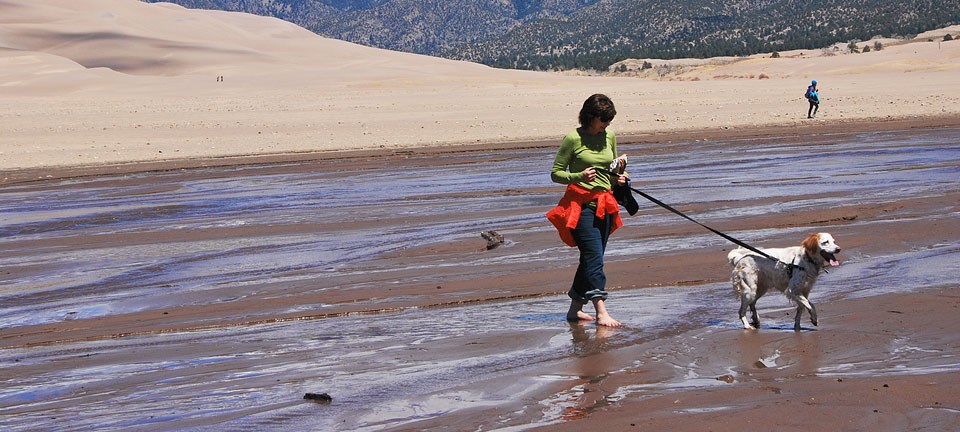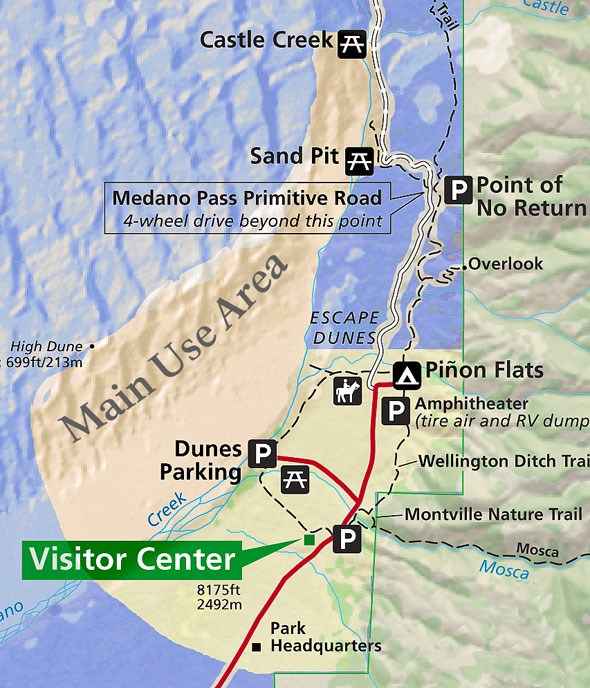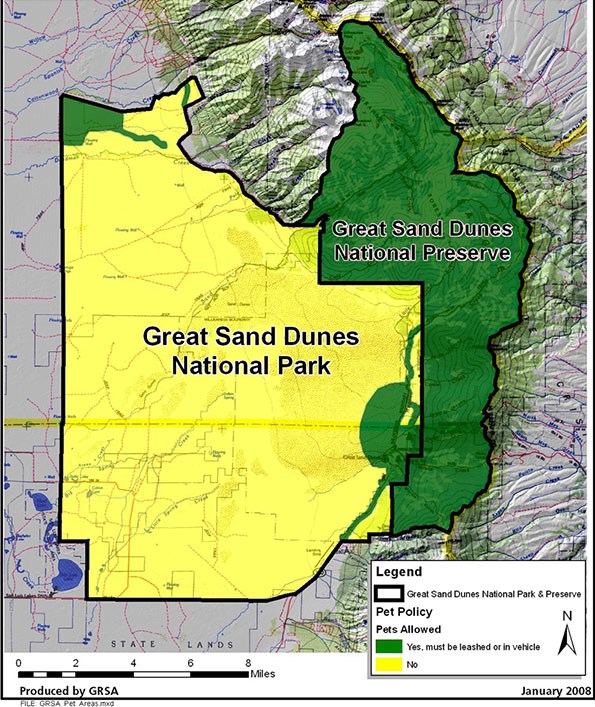
NPS/Patrick Myers Make your visit to Great Sand Dunes a positive, safe experience for you and your pet. Following these guidelines will protect you, your pet, wildlife, natural resources, and other visitors.
Main Use Area Pet MapWhere are pets permitted?Pets are permitted in the Preserve (including Mosca Pass Trail) and main use areas of the Park (including Piñon Flats Campground, Dunes Overlook Trail, and along the Medano Pass Primitive Road). Pets must be leashed at all times and owners must clean up after them. Please carry out all waste.Where are pets NOT permitted?On this map of the main frontcountry area of the park, blue shading indicates where pets are not permitted.Pets are not permitted:

NPS Overview Pet Map of the Park and PreserveOn this map, green indicates areas where pets are permitted on leash, while yellow indicates pets are not permitted. Green areas include Great Sand Dunes National Preserve, Medano Pass Primitive Road, the Liberty Road, and the northwest corner of the national park. Pets are also permitted in the main day use area of the dunefield - please see the other map on this page for detailed locations. 
Your Pet's Safety• Hot Sand Temperatures In summer months, extreme sand surface temperatures up to 150 degrees F can occur from late morning through late afternoon. Plan to hike on the dunes in early morning or evening in summer months. Protect your pet’s feet with socks or pet booties. Watch your pet carefully for signs of heat exhaustion. When Medano Creek is flowing, keep your pet close to the cool, wet sand for relief. Bring a water bowl to give your pet water on your hike.• Vehicles Do not leave pets unattended in your vehicle. Summer temperatures in a vehicle can quickly soar to dangerous levels. Extreme cold temperatures in the winter can also pose a danger to your pet. • Cactus Spines The desert grasslands surrounding the dunes contain prickly pear cactus. If you walk your pet in the grasslands, walk slowly and carefully to to avoid injury to your pet from the sharp spines. Consider carrying tweezers or pliers. • Dangers from Wildlife Keeping your pet on a leash less than six feet long is the best protection against wildlife. Pets may not be left tied to vehicles, trees or other objects. To prevent injuries, do not allow your pet to get close to a wild animal. Deer may kick, mountain lions or bears may attack, coyotes may chase, badgers may bite, and porcupines may release quills. On rare occasions, coyotes or other animals may approach your leashed pet. Raise your arms and shout loudly; coyotes will typically run away. Please report any unusual encounters to a park ranger. Never leave pet food out in your picnic site or campsite, as it may attract wild animals. Protecting the Park and Other VisitorsGreat Sand Dunes National Park and Preserve is one of only a few national parks that permits pets in many areas. Responsible pet ownership in the park and preserve will enable the park to continue to allow you to visit with your pets in the future. Pet owners violating park regulations may be cited and/or fined. Laws and Policies

Bag your waste, always wear a leash, respect wildlife, know where you can go. |
Last updated: May 6, 2025
